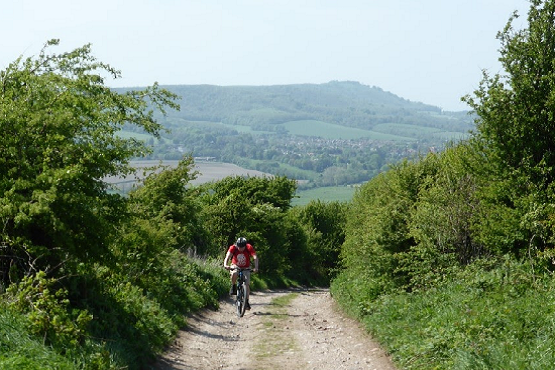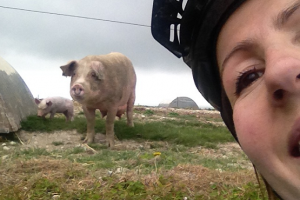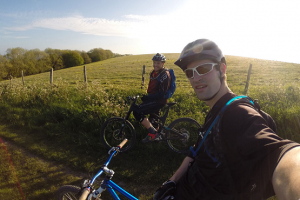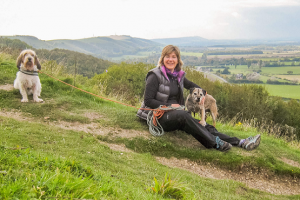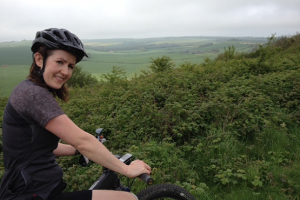Putting our new bikes to the test
Hassocks Community Cycle Hire (HCCH) is a social enterprise hiring mountain bikes, based at Hassocks station, the gateway to the South Downs National Park on the London to Brighton railway line. There are three trains an hour from London (around 50 minutes) and Brighton (10 minutes) and Hassocks station is around 10 minutes’ ride from the base of the Downs.
I decided it was time to put our new mountain bikes to the test on the South Downs and this coincided nicely with HCCH teaming up to provide guided rides with Marmalade MTB, AKA Sean Howell, a British Cycling Level 2 mountain bike leader. We agreed a route, starting from HCCH’s shop, climbing the escarpment on The Tank Tracks at Keymer and following the South Downs Way via Clayton Windmills and Devil’s Dyke as far as the ruins of Bramber Castle, standing guard over the River Adur.
We climbed the gravelled Tank Tracks just south of Keymer and joined the South Downs Way at the top. Around a mile down the track we came to the iconic Jack and Jill windmills, standing above Clayton village with its Saxon church famous for its medieval frescoes. Jill Windmill is a working post mill open to the public on Sundays throughout the summer. On a sunny day, her white, wooden structure presents a stark contrast to the deep blue sky.
From Clayton windmills it was downhill to Pyecombe where we would cross a bridge over the A23 before facing another climb. Thanks to Sean, I was honing my mountain biking technique on both the ascents and boneshaking (at speed) descents. After the climb out of Pyecombe we came down a steep, rutted chalk track into Saddlescombe, a picturesque hamlet nestled in the Downs. We filled our water bottles at the Hiker’s Rest cafe, resisting the very tempting cakes, and moved on to Devil’s Dyke.
Devil’s Dyke is a V-shaped dry valley, a cleft in the chalk formed either in an attempt by the Devil to flood the Weald of Sussex, or by erosion as a result of meltwater at the end of the Ice Age. Take your pick. A mid twentieth century pub called the Devil’s Dyke stands rather out of place at the top of the hill, overlooking Constable’s “grandest view in the world”. There was also once a tourist railway line from Hove, a steep grade railway running up the escarpment and a cable car 230 feet above the Dyke itself. These days, public transport is limited to buses but we recommend taking a bike any day.
From Devil’s Dyke, the ride along Fulking Escarpment was more regular but not without its ups and downs. After two and a half miles we came to Truleigh Hill, with its cluster of houses, a communications tower and youth hostel, where we again filled our bottles.
From here it was mostly downhill, with a steep final descent into Upper Beeding and then Bramber. These quiet villages are separated by the river Adur, which runs to the sea at Shoreham. Defending this gap in the Downs once stood Bramber Castle, built soon after the Norman conquest. All that survives today is one 14m high wall of the gatehouse tower, a few remains of the curtain wall and the motte at the centre. Sean and I ended our ride here and feeling we’d earned our lunch, made our way back to The Castle Inn Hotel , where we drank local ale from the Downlands Brewery in Small Dole and Sean ate salmon from Springs Smoked Salmon at Edburton, both under four miles away.
Want to follow this route? Download it as a GPX file to your device.
Photo credit: Sean Howell

